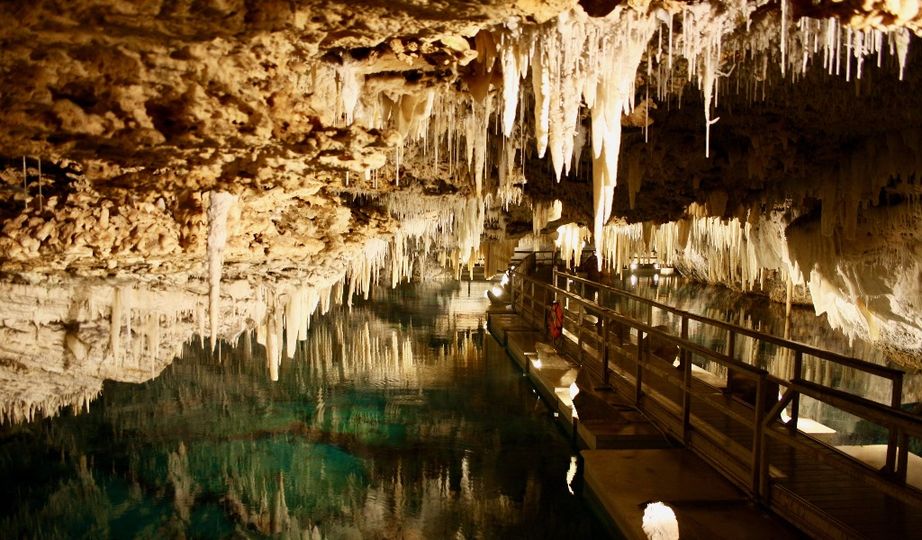Barbuda debido a que posee abundante arena blanca la exporta a otros países.

The Crystal and Fantasy Caves are among the most popular tourist attractions of Bermuda, and there are many tourists who opt for the adventure of going down into its depths and exploring those wonders of nature.
There are those who describe them as spectacular, seeing in situ their clear subway pools of light blue water, the incredible stalagtites and stalagmites formations of all sizes and imaginable forms.
They treasure an unparalleled beauty in each of them and have earned the
rating, both by visitors and residents of real hidden treasures of Bermuda.
Those famous subway caves of Bermuda are located in the Hamilton parish, near Castle Harbour, with approximately 500 m long and 62 m deep, under 19 - 20 m below the sea level.
The Crystal and Fantasy Caves are millions of years old and according to research it is considered that they were formed during the Ice Age and discovered in the early 1900s.
By chance they were discovered in 1905 by Carl Gobbons and Edgar Hollis, two 12-year-old boys who lost a ball of cricket and looking for it they saw that Sunday wonder, so it looked like a very small cavity.
After some time, the family that owns the place began to explore that limestone terrain that has many caves and subway paths through which the water of the Atlantic penetrates.
The Crystal Cave, with numerous stalactites and stalagmites and deep pools of crystalline water, about 36 meters of depth, hides the Cashow Lake of transparent waters and 17 meters of depth.
Visitors have the opportunity to join the tours that start every half hour and provide data on the history and geology of the cave. In addition, because of their shape, certain rocks remind Bob Marley or the Manhattan building, for example.
In addition to seeing Crystal Cave during the tour you can visit the Fantasy Cave, reopened in 2002, with fossilized tree roots and it is much deeper than the Crystal. It also has paths, artificial lights and it is very beautiful

Barbuda debido a que posee abundante arena blanca la exporta a otros países.